I am sharing a foolproof and simple way of making yogurt without any equipment. Oh, except a bowl, saucepan, spoon, whisk, a little yogurt to act as a starter, and milk, of course—oh, and a little patience.
In between 4 and 12 hours, you will have a lovely, jiggly yogurt that you have made yourself. And you get to control the quality of the milk (whether dairy-based or not) without any preservatives, stabilizers, or sugar if you wish. If you would like to use a recipe for pressure cooker yogurt see my Instant Pot Greek yogurt recipe.
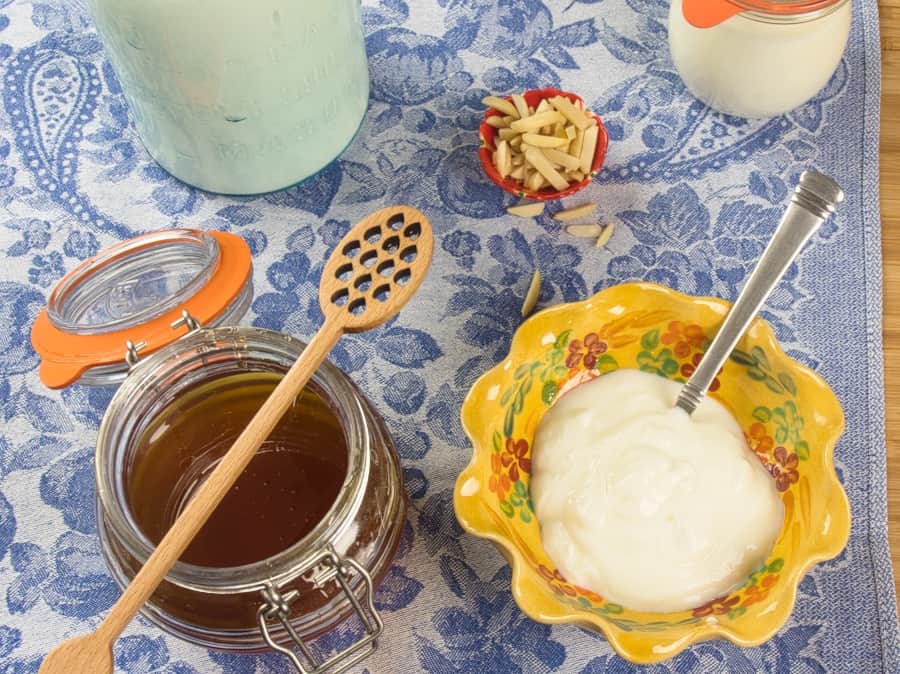
I am sharing a foolproof and simple way of making yogurt without any equipment. Oh, except a bowl, saucepan, spoon, whisk, a little yogurt to act as a starter, and milk, of course—oh, and a little patience. In between 4 and 12 hours, you will have a lovely, jiggly yogurt that you have made yourself. And you get to control the quality of the milk (whether dairy-based or not). And without any preservatives, stabilizers, or sugar if you wish.
Versatile
Along with onions, tomatoes, ginger, and garlic, yogurt is essential to an Indian kitchen. It is used in both sweet and savory applications: from lassis, puddings, and to replace eggs in cookies, cakes, and cheesecakes (on the sweet side). In savory cooking, yogurt tenderizes and moistens meat as a marinade. It also gives body to a masala (sauce) and provides a cooling bite in the form of raita, on the side. As important as its versatility, are the significant health benefits of eating yogurt regularly: it supports gut health and the immune system. I like to sub out yogurt for some or all of the heavy cream, sour cream, or mayonnaise in my cooking.
About Starters
This recipe for homemade yogurt requires that you pick your starter carefully because it will determine the tanginess and thickness of your yogurt. Besides buying a good yogurt from the store, you might be able to beg some from a friend who makes a good yogurt. There are also “heirloom” starters that can be purchased online or at your local health food store. This type of starter is freeze-dried and is designed to help you keep making yogurt indefinitely. Typical store-bought yogurts contain only several strains of bacteria, and may only be good for several generations of yogurt. If you find your yogurt isn't setting properly, you may need to use a fresh batch of yogurt for your starter.
Two brands that are on all favorites lists are Euro Cuisine All Natural Culture and, for a vegan option, a starter from Cultures for Health Vegan Yogurt Starter. After you have made a batch of yogurt you are happy with, you will want to remember to save 1/4 to 1/2 cup of yogurt, depending on the size batches you make, for use in the next yogurt-making session.
If you are looking for a recipe to make yogurt in the Instant Pot or slower cooker, check out my Instant Pot Greek yogurt recipe.
Add Happy Cooking!
~ Alonna
See the Notes below before you cook.
Recipe Card 📖
How to Make Homemade Yogurt (Stove)
Equipment
- Heavy saucepan large enough for the amount of milk you are using.
- Spatula
- Whisk
- Instant read or candy thermometer
- Small bowl or measuring cup
- Storage container/s
Ingrediants
- 1 tablespoon yogurt ~ With active cultures in the ingredients, at room temperature
- 4 cups milk ~ Whole or 2%, preferrably organic
- 2 tablespoons heavy cream, optional ~ For a thicker yogurt
Instructions
Prepartions
- Clean and sterilize your equipment, tools, and work surface. There are two ways to do this: Use the “sanitize” setting on the dishwasher or sterilize everything with boiling water. Also make sure they are completely rinsed of soap residue, which can prevent a proper culture incubation. Set out all the equipment for easy access.
Making Yogurt with a Stove
- Gather your ingredients.
- In a heavy pot over medium heat, gently heat milk to 180°F (82°C). Keep between 180°F (82°C) and 190°F (88°C) for 10 minutes. Stir frequently to keep the milk from sticking.
- Cool to somewhere between 110°F to 115°F (43°C to 46°C). Don’t be tempted to heat the milk over high heat, or the milk proteins will overheat and give your yogurt a grainy texture.
- Remove a cup of the hot milk into a glass 2-cup measuring cup or medium bowl, and whisk in the yogurt starter. Pour back into the pot and give the mixture a good stir.
- Incubate your yogurt in the containers you would like to store it in: wide-mouth quart jars, 1 cup glass jars with lids, etc. Cover loosely with the lids and place in a warm, draft-free spot. My favorite place is in the oven, with the light on. I've tested the temperature in this environment and it runs about 92°F. The ideal temperature is 90°F(32°C) to 110°F(43°C). Other good options are: an insulated cooler with a tight-fitting lid filled to 1 inch from the top of your containers with warm water (about 110°F), on top of your refrigerator, or even in a draft-free spot, wrapped in a towel and placed on top of a heating pad.
- Let sit for 3 to 18 hours, depending on how warm the incubation spot is. You are looking for a set but jiggly (think jello) texture; the yogurt will continue to firm up in as it chills. See the last Note for how long it keeps, and how to preserve your starter if you will be taking a break from yogurt making.
- If you are wanting to strain your yogurt for a thicker, more Greek-style version, set a colander or sieve over a bowl lined with a large coffee filter, cheesecloth, very fine sieve, or a nut milk bag and let it sit in the refrigerator for 2 to 6 hours to drain. A nut milk bag shortens the straining time from at least a couple of hours, depending on the texture you are going for, to 20 to 30 minutes. It is also reusable and each bag accommodates 3 quarts of yogurt at a time.
- If you use different kinds of milk, or starter, you will have different results. Making yogurt is simple but ingredient variables, as well as trying different techniques will also affect your final product. Have fun experimenting and finding the perfect yogurt for you!
- If you are happy with your yogurt, don't forget to set aside 1/4 to 1/2 cups aside for the next batch, depending how much you want to make the next time.
Resources
- The blog Salad in a Jar:
Notes
- You can use 2% or even 1% milk but your yogurt will be thinner.
- Ideally, use milk that is pasteurized not ultra-pasteurized. It is harder for ultra-pasteurized milk to set up properly. If you are using ultra-pasteurized milk you can skip the heating to the steaming stage. Just heat milk to 116°F to 125°F degrees.
- If using yogurt as a starter, make sure that it has live cultures and without a lot of preservatives, and that you ideally use it within 7 days for the next batch.
- If you want a creamier yogurt, add 2 tablespoons of heavy cream in with your milk.
- Incubating your yogurt longer than for the optimal length of time—given all the variables (ambient temperature, starter, and the milk you are using)—will not make your yogurt thicker. That needs to be done by straining it. However, the longer you incubate the sourer it will become, so you can choose the right level of tartness you prefer.
- For details and ideas for how to make homemade yogurt using non-dairy milk, take a peek at an article published in the New York Times.
- Your homemade yogurt will be good for at least 2 weeks, and the longer you keep it the sourer it will become. Use as a starter no longer than a week after making it so the culture will still be strong.
- If you want to speed up the cooling process after bringing it to the small bubble stage, you can place the pan in a larger pot or bowl filled with cold water.
- As soon as your yogurt is set to your liking, refrigerate it. It will continue to firm up as it cools down.
- If you are taking a break from yogurt making, on or before the two-week mark, save your starter yogurt with an additional two tablespoons, and freeze for a later date.
- If your yogurt is not smooth, a little chunky:
- You can actually let your yogurt incubate too long. Start checking your yogurt at the two-hour mark, and then hourly thereafter.
- If your yogurt is too watery:
- You may not have let it incubate long enough, so check in additional hourly increments. Or...
- You may have added too much starter; generally,1 tablespoon of starter per quart (4 cups) of milk should be enough. This is a scenario where more is not better and if you have used too much starter yogurt it will be sour. Or...
- You may have added your starter before the milk has cooled to a temperature range of 110 to 115. Or...
- Lastly, you may not have a good quality starter or it is old; replace it with a fresh batch of yogurt starter or try an heirloom starter. Some starters lose their thickening capability over time.
- To save this batch, place in some cheesecloth and drain until it reaches the texture you are happy with.
- The step where many people go wrong: incubating your yogurt at too high a temperature will kill your friends, the active cultures. On the other hand, if the milk doesn’t stay warm enough, nothing much will happen. Either way, you will have milk, not yogurt.
- If you are looking for a recipe to make yogurt in the Instant Pot or slower cooker, check out my Instant Pot Greek yogurt recipe.

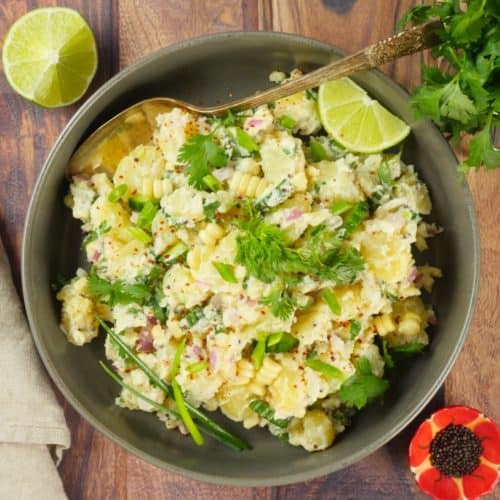
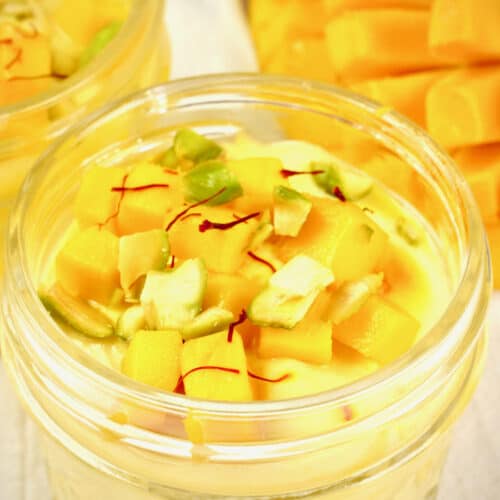
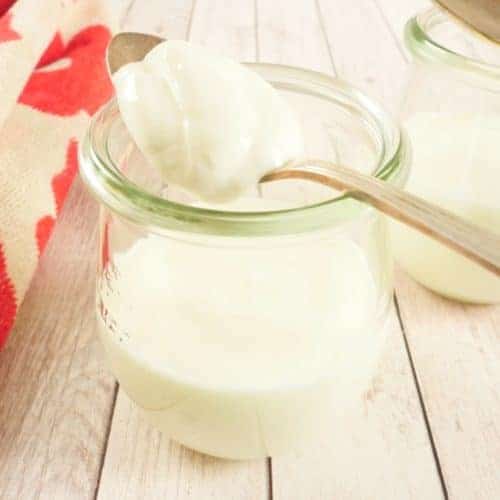
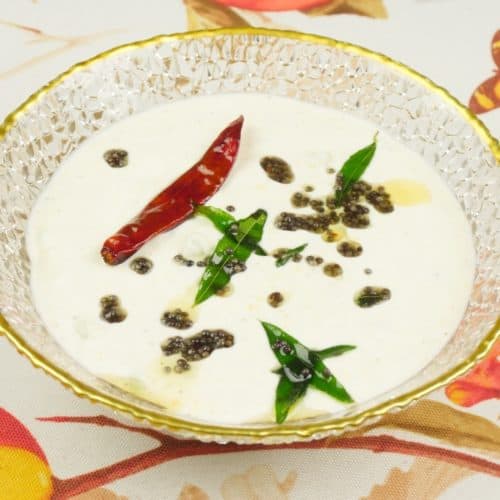
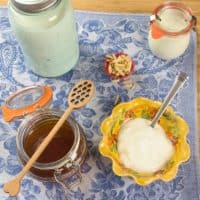
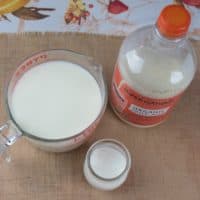
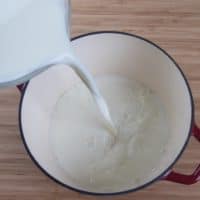
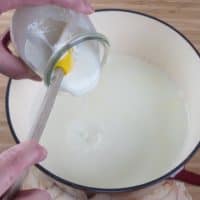
linda says
can't wait to see the final!
Eric says
Hi Linda, we are live, just like Alonna's yogurt!
Sonny says
Fabulous, detailed description of this amazing process. Thank you so much!
Alonna says
Thank you Sonny! I am glad this recipe was helpful.
Jill says
Made this last night. Actually set! So proud of myself. Couple questions
1. Have you or do u know. If you can make protein milk and have the same result?
2. How do you make it more sour? Is that just the waiting time.
Mixed up some frozen strawberries placed on the bottom of mason jar with yogurt on top. Some stayed mixed some settled back at the bottom.
Alonna says
Hi Jill,
I am so glad that your yogurt came out well! Question #2 first. As you thought, it is just a matter of time. Regarding "protein milk," I am unsure of what you are referring to. I looked up protein milk online and came up with milk protein concentrate. Is this what you are referring to? If so, I couldn't find a recipe for it because it seems to be a commercial product. I'd love to know for sure what ingredient you have in mind. Cheers, Alonna